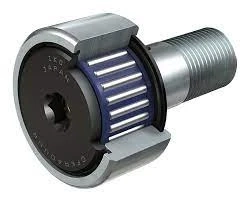Have you observed the swift movement of a needle in a sewing machine? It is caused due to a rotary motion that an instrument controls by converting mechanical energy. This instrument is known as a cam and follower, a combination of two sets of equipment for swift to and fro movements. Cam is the rotating device, while the follower is the reciprocating device. You can see a cylindrical-shaped device in the machine, which is the cam that is rotated by a rod called the follower. The shape and design largely depend on the utility of the device and the force needed to convert mechanical energy into rotary motion.
There are different types of cam and followers that you can combine for the best results. Also, they are utilized uniquely to produce the perfect motion in a blended sequence of both. Here are the details:
Types Of Cam
Cam can be classified into the following types:
- Conjugate: Rollers are placed along the follower to restrict each other’s motion and create noiseless operations. The cam remains in between the line of motion.
- Radial: The cam is a flat plate or disc with a motion perpendicular to the axis.
- Wedge: The cam in the shape of a wedge comes up and down as the follower moves to and fro with sliding motions.
- Cylindrical: The cam is cylindrical, with the motion parallel to the axis.
- Spherical: The cam is in the shape of a sphere, with a groove cut in shape for easy movements.
- Globoid: The surface of globoid cams can be either concave or convex with cylindrical shapes.
Types Of Follower
Based on shape:
- Roller: A roller is placed at the tip of the follower to ensure smooth contact with the cam.
- Knife-edge: The follower has a pointed tip that causes wear and tear when it comes into contact with the cam.
- Flat-faced: The tip is flat-faced, ensuring quick motion. But it can cause frequent wear and tear.
- Spherical-faced: The spherical shape of the tip allows fast movements with minimal friction, enhancing the machine’s utility.
Based on position:
- Inline: In these followers, the axis coincides with the cam at the center.
- Offset: These followers coincide with the cam at some distance from the center.
Based on the motion:
- Translating: These followers ensure a straight-line motion by coinciding quickly with the cam.
- Oscillating: When the motion oscillates in a definite motion, the follower used is a little pivoted.
Utilization Of Mechanical Energy With The Help Of Cam And Follower- An Interesting Concept
A mechanical design engineer has the expertise to make the best cam and follower equipment for various devices according to their strength and utility. Before you start creating such designs, you need to understand the basic concepts of mechanical energy and rotary motion. Therefore, a detailed mechanical engineering study is required to gain expertise on the mechanism and create interesting new devices with the help of the best equipment. The career prospects are also high, especially owing to the huge demand for mechanical design engineers.



